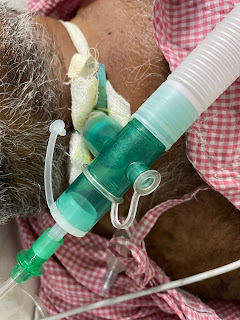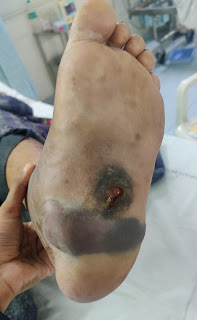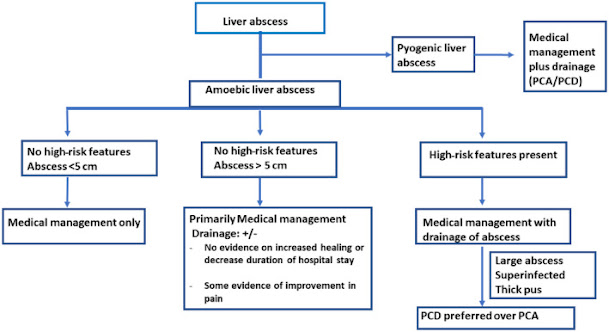57 YEAR OLD MALE WITH CHEIF COMPLAINTS OF FEVER, ALTERED SENSORIUM FROM 1 MONTH
NOTE: THIS IS AN ONLINE E LOGBOOK TO DISCUSS OUR PATIENT'S DE-IDENTIFIED HEALTH DATA SHARED AFTER TAKING HIS/HER GUARDIAN'S SIGNED INFORMED CONSENT. HERE WE DISCUSS OUR INDIVIDUAL PATIENT'S PROBLEMS THROUGH A SERIES OF INPUTS FROM THE AVAILABLE GLOBAL ONLINE COMMUNITY OF EXPERTS INTENDING TO SOLVE THOSE CLINICAL PROBLEMS WITH COLLECTIVE CURRENT BEST EVIDENCE-BASED INPUT
A 57-year-old male resident of Nalgonda security guard by occupation came with the chief complaints of fever since 1-month, generalised weakness since 1 month and altered sensorium 1 month back for 3 days.
HISTORY OF PRESENT ILLNESS:
He is apparently alright before 5 yrs then he developed neck pain which is insidious in onset gradually progressive dragging type associated with muscle spasms and clicking, popping sensation in the neck and backache which was also dull and aching pain with not able get up easily from bed and then after he developed dizziness, weakness, tingling and numbness in both the hands and legs and loss of bowel and bladder control. Bowel cleared through enema and bladder through urinary catheter. For this diagnosis is made as cervical and lumbar spondylosis and advised to undergo surgery. In this period he was diagnosed as hypertensive, but no regular treatment was given to him. Surgery was done for cervical spondylosis and conservatively managing for lumbar spondylosis.Patient developed generalised weakness 1 month with blurring of vision which was insidious on onset not progressive, after 2 days he developed fever which was 103 degrees. Fever was insidious in onset, gradually progressive no aggravating and relieving factors known. After two days of onset of fever he suddenly fell in bathroom due to weakness in legs and hurt his head. Upon approaching the patient family observed slurring of speech. He was then taken to government hospital. He approached the car by himself walking with the help of a stick during the travel to hospital he showed symptoms of altered sensorium where he was responding lately. He was kept in ward and treated only with glucose without any medications. He was then taken to a private hospital where his condition worsened and was unable to remember things which happened 10 mins back and could not recognise anyone except his elder daughter. As he was being taken to MRI, he lost consciousness and completely stopped responding. MRI was taken and high dose antibiotics were given where he regained consciousness and could slowly start recognizing his family members. There he was treated strong enough to transport to our hospital. They did an elective tracheostomy and sent him to our hospital. Upon reaching our hospital CSF analysis were done and treatment was started. Fever subsided completely and he was afebrile for a week. After a week into the treatment, he developed shortness of breath, he started developing pneumothorax to which a inter coastal drainage tube was placed. He was on ventilator for some time after this episode. Later 3 days after pneumothorax the patient developed a bed sore and along with-it developed fever. This time it was continuous gradually progressive relieved on medication. No history of loss of coordination and unsteadiness while walking. No history of nausea, vomiting, diarrhoea, constipation abdominal pain. No h/o decreased in urine, blood in urine, pus in the urine.
PAST HISTORY:
No h/o diabetes, asthma, TB, coronary artery disease in the past.
PERSONAL HISTORY:
His occupation is security guard in a bank and ATM in Nalgonda; sits in a chair for a long time.
Diet: mixed
Appetite: normal
Sleep: regular
Bowel and bladder movements: regular
No h/o smoking, chewing tobacco, drinking alcohol.
FAMILY HISTORY:
No relevant family history
THOROCOSTOMY
GENERAL EXAMINATION:
Patient is conscious, coherent, cooperative. moderately built and nourished
No pallor, icterus, cyanosis, clubbing, lymphadenopathy, pedal edema.
Vitals:
Temperature: 103 C
Blood pressure:130/90 mmHg
Pulse rate: 96 bpm
Respiratory rate: 24 cpm
SYSTEMIC EXAMINATION
CARDIOVASCULAR EXAMINATION
S1, S2 heard. No murmurs
RESPIRATORY EXAMINATION
Inspection:
chest b/l symmetrical
bilateral air entry is normal with tracheostomy and ventilation but decreased with removal
no scars and sinuses on the chest wall
no chest wall deformities
no visible pulsations over the chest
Palpation:
all inspiratory findings are confirmed
tactile focal fremitus: decreased and right mammary, infra-axillary, infra-scapular, inter-scapular areas
Percussion:
Dull note in right mammary, infra-axillary, infra-scapular, inter-scapular areas. and resonant note in left infra-axillary, infra-scapular regions.And fine crackles in the left infra-clavicular and mammary regions.
Auscultation:
Decreased breath sounds in right and left infra-axillary, infra scapular regions.
ABDOMEN
Abdomen is soft, non-tender, no organomegaly
CENTRAL NERVOUS SYSTEM EXAMINATION
Higher mental functions: Intact
CRANIAL NERVES
Olfactory: Normal
Optic: Normal
Oculomotor, trochlear and abducens: Normal
Trigeminal: Normal
Facial: Normal
Vestibulocochlear: Normal
Glossopharyngeal, vagus: Normal
Spinal accessory: Normal
Hypoglossal: Normal
MOTOR FUNCTIONS
Bulk: Normal in all four limbs
Tone: Normal in all four limbs
Power: Upper limb left 4/5, Upper limb right 4/5
Lower limb left 4/5, Lower limb right 4/5
Neck muscles good
Trunk muscles good
Plantar reflex present on both sides
Reflexes: Superficial reflexes: Corneal, conjunctival, pharyngeal: Present
Deep tendon reflexes: Biceps reflex 2+ on both sides
Triceps reflex 2+ on both sides
Supinator jerk 2+ on both sides
Knee jerk 2+ on both sides
Ankle jerk 2+ on both sides
Coordination tested along with cerebellum normal
No involuntary movements
SENSORY SYSTEM
Spinothalamic: Crude touch, pain, temperature normal on both sides on all limbs
Posterior column: Fine touch, Vibration, Position sense present on all limbs
Cortical: Two-point discrimination, Tactile localisation, Graphesthesia, Stereognosis normal
CEREBELLAR SIGNS
No nystagmus, coordination intact in upper and lower limbs, hypotonia absent
NO SIGNS OF MENINGEAL IRRITATION (Neck stiffness, kernig’s sign, Brudzinski sign)
No thickened nerves in periphery, trophic ulcers, wrist drop or foot drop
PROVISONAL DIAGNOSIS:
Acute ischeamic stroke involving cortical and subcortical regions, with suspicion of respiratory distress and there is weakness of four limbs called quadriparesis and involving with previous history of cervical spondylosis and myelopathy and lumbar spondylosis.
INVESTIGATIONS:
Infarct of middle cerebral artery and lacunar infarct leading to acute ischeamic stroke involving cortical and subcortical regions, with respiratory distress and lt side pneumothorax and right sided lower lobe collapse there is weakness of four limbs called quadriparesis and with previous history of cervical spondylosis and myelopathy and lumbar spondylosis with deranged renal function tests.



















Comments
Post a Comment